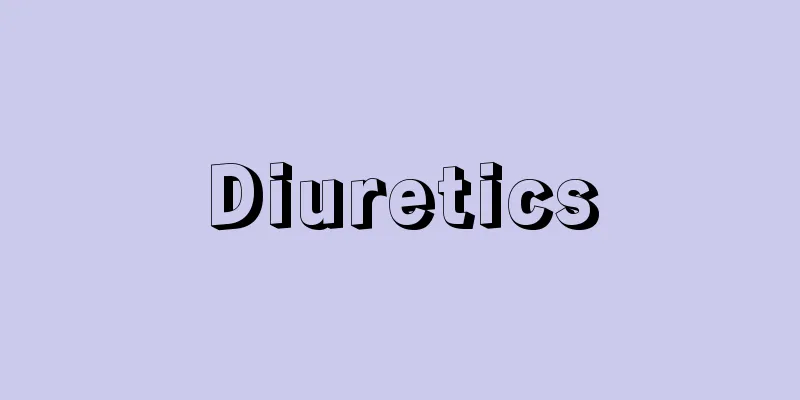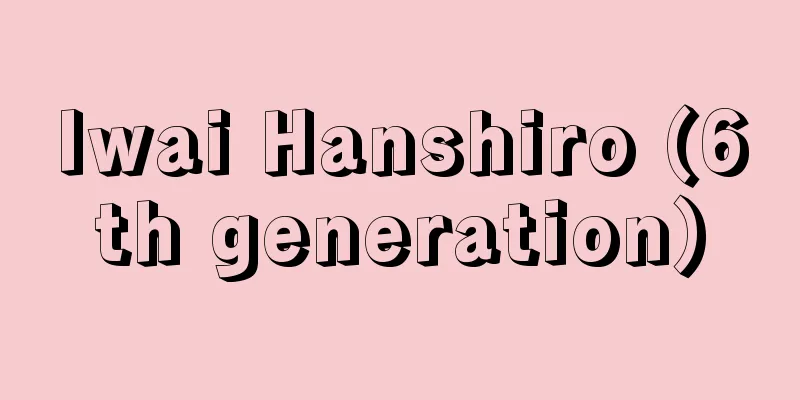Diuretics

|
Diuretics. A drug that promotes urine production in the kidneys, increasing urine volume and eliminating edema (swelling). Diuretics are divided into intrarenal diuretics, which act directly on the kidneys, and extrarenal diuretics, which act indirectly. Intrarenal diuretics include (1) xanthine derivatives such as caffeine that promote glomerular filtration, (2) thiazides and antialdosterone drugs that inhibit reabsorption in the distal convoluted tubule, and (3) mercurial diuretics and furosemide that inhibit reabsorption in the Henle's loop and proximal convoluted tubule. Extrarenal diuretics include (1) cardiac glycosides such as digitalis as cardiac diuretics, (2) hypertonic sugar solutions such as potassium salts (potassium acetate, etc.), urea, mannitol, and isosorbide as osmotic diuretics, and (3) ammonium chloride as acidotic diuretics. Recently, mercurial diuretics have completely fallen out of use due to their toxicity, and loop diuretics such as furosemide, thiazides, and antialdosterone drugs are commonly used as antihypertensive diuretics. They are also classified into three categories based on the strength of their effectiveness: (1) loop diuretics, which are highly effective, and (2) carbonic anhydrase inhibitors (acetazolamide), antikalemic diuretics (diuretics with low potassium excretion, such as spironolactone), and osmotic diuretics, which are moderately effective. Loop diuretics include furosemide, bumetanide, mefruside, and ethacrynic acid, while thiazides include many drugs such as hydrochlorothiazide, trichlormethiazide, benzthiazide, and ethiazide. Thiazide-like drugs include quinethazone, chlorthalidone, and chlorexolone, while antialdosterone agents include spironolactone, potassium canrenoate, and triamterene. Diuretics have a problem with electrolyte balance, and because they excrete a large amount of potassium ions, they can cause hypokalemia. Many of them also excrete sodium ions, which means they have a hypotensive effect, and are called antihypertensive diuretics. Diuretics that have a cardiac stimulant effect, such as digitalis, are called cardiac diuretics. [Fumiji Koho] Source: Shogakukan Encyclopedia Nipponica About Encyclopedia Nipponica Information | Legend |
|
利尿剤。腎臓(じんぞう)における尿の生成を促進し、尿量を増加させて浮腫(ふしゅ)(むくみ)を消退させる薬剤をいう。腎臓に直接作用する腎内性利尿剤と、間接的に作用する腎外性利尿剤に分けられる。腎内性利尿剤には、(1)糸球体濾過(ろか)を促進するものとして、カフェインなどキサンチン誘導体、(2)遠位曲尿細管の再吸収を抑制するものとして、チアジド系や抗アルドステロン薬があり、(3)ヘンレの係蹄(けいてい)(Henle's loop)および近位曲尿細管の再吸収を抑制するものに、水銀利尿剤やフロセミドなどがある。腎外性利尿剤には、(1)強心利尿剤としてジギタリスなどの強心配糖体、(2)浸透圧性利尿剤としてカリウム塩(酢酸カリウムなど)、尿素、マンニトール、イソソルビドなどの高張糖液、(3)アシドーシス性利尿剤として塩化アンモニウムなどがある。最近では水銀利尿剤は、毒性のためまったく使用されなくなり、フロセミドなどのループ利尿剤、チアジド系や抗アルドステロン薬が降圧利尿剤として繁用されている。 また、効力の強さから次の三つに分類される。(1)強力な効力をもつものとしてループ利尿剤、(2)中等度の効力をもつものとして炭酸脱水素酵素阻害薬(アセタゾラミド)や抗カリウム利尿剤(カリウムの排泄(はいせつ)の少ない利尿剤で、スピロノラクトンなど)および浸透圧性利尿剤がある。ループ利尿剤にはフロセミド、ブメタニド、メフルシド、エタクリン酸などがあり、チアジド系にはヒドロクロロチアジドをはじめ、トリクロルメチアジド、ベンツチアジド、エチアジドなど多くの薬剤がある。チアジド類似薬にはキネタゾン、クロルタリドン、クロレキソロンがあり、抗アルドステロン剤にはスピロノラクトン、カンレノ酸カリウム、トリアムテレンなどがある。 利尿剤では電解質のバランスが問題で、とくにカリウムイオンの排泄が大であることから低カリウム血症をおこすことがある。また、ナトリウムイオンも排泄することから降圧作用を現すものが多く、降圧利尿剤とよばれる。ジギタリスのような強心作用をもつものは、強心利尿剤といわれている。 [幸保文治] 出典 小学館 日本大百科全書(ニッポニカ)日本大百科全書(ニッポニカ)について 情報 | 凡例 |
<<: Li Ning (English spelling) (R)I Yŏng
Recommend
Tomisaki Shunsho
A performer of Tsuguyama-ryu koto music and jiuta...
General Natural History and Theory of the Heavens - Tenkai no Ippan Shizenshi Toriron (English) Allgemeine Naturgeschichte und Theorie des Himmels
This is the most famous of I. Kant's series of...
Competition
〘noun〙① The overlap of several matters on the same...
International Convention for the Safety of Life
In the same year, the ship departed Southampton f...
Burtt-Davy
...In temperate tropical regions, it has a strong...
Kaiseisho - Kaiseisho
A Western studies research and educational instit...
Baden-Powell, RS (English spelling) BadenPowellRS
…It is a movement centered on the education of gi...
Red soil country
A nation that existed in the southern part of the...
Konoe Motohiro
1648-1722 (Keian 1-Kyoho 7) A nobleman in the earl...
Thomas, CX
…This was due to weaknesses in the mechanical des...
Iksir - Iksir
…He stayed in his father's hometown of Kufa f...
Object-oriented database - OBUJEKUTOSHIKOUDEATABESU
A database that incorporates object-oriented think...
Alfred James Lotka
1880‐1949 American statistician, physical chemist,...
Sarracenia - Sarracenia
A general term for the genus Sarracenia, family S...
Sauce sabayon (English spelling)
…Made by adding warm milk to beaten egg yolks and...









